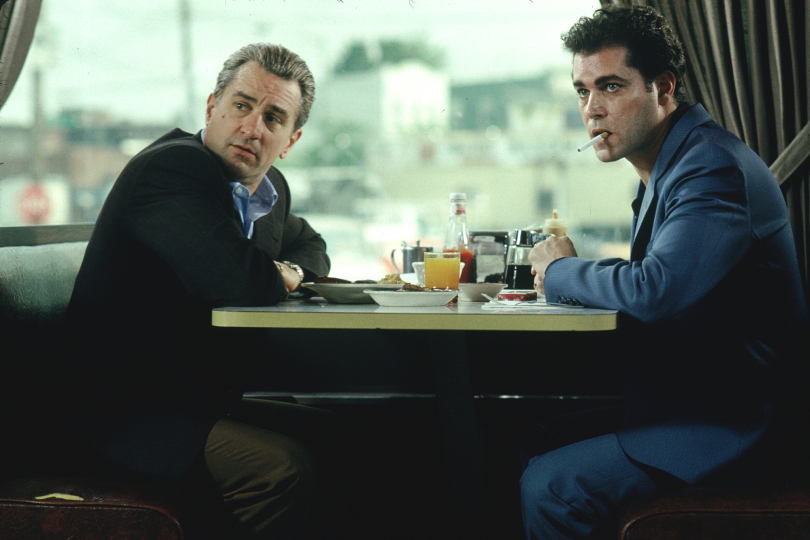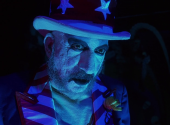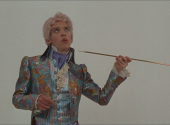
Soundtracks of Our Lives #3: Goodfellas, Music to the Sound of Guns
Gangsters, mobsters, family feuds, honour killings and bloodbaths of revenge – the cinematic world has been full of them for decades. But if we had to choose a brilliant example of a well-crafted screenplay and, at the same time, an excellent choice of soundtrack, we could not but think of Martin Scorsese's masterpiece, the sublime Goodfellas.
Goodfellas is a cinematic wonder that transcends the boundaries of the gangster genre. The film's story is based on Nicholas Pileggi's 1985 book entitled Wiseguy: Life in a Mafia Family. The non-fiction book narrates the vicissitudes of Henry Hill Jr., an associate of the Lucchese family of New York, of which he was a member from 1955 to 1980 and who, once caught by the FBI for narcotics trafficking, became their mole.
The raw and unfiltered depiction of the lives of Henry Hill and his fellas, Jimmy Conway and Tommy DeVito, is not only a testament to the director's storytelling prowess but also to the power of its soundtrack. The film's musical score is as intricate and layered as the lives of its characters, using a blend of contemporary hits and timeless classics to enhance the narrative and evoke the zeitgeist of the 1970s and 1980s.
The Goodfellas soundtrack is a veritable jukebox of American music, with each song meticulously selected to underscore the film's themes and moods. For the director, it was crucial that every single choice of music commented on the film sequence. However, not all the musical decisions were taken beforehand: Scorsese included some pieces during the drafting of the script, while others were added later.
Interestingly, the script itself suffered the same fate, as De Niro, Pesci and Liotta, the film's main characters, often found themselves improvising during the film's production so that the director modified the script during the production process. The opening number, "Rags to Riches" by Tony Bennett, sets the stage for the rags-to-riches, or rather, rags-to-mob-lifestyle trajectory of Henry Hill.
The song's hopeful melody and Bennett's smooth vocals serve as a poignant counterpoint to the harsh realities of the characters' lives. It's a narrative device that immediately engages the audience and sets the tone for the film's emotional rollercoaster. On the other hand, many non-dialogue scenes were filmed to playback, forming the backdrop to the stage sequence.
A significant example of this is "Layla" by Derek and the Dominos, which accompanies the iconic two-minute shot that introduces us to the film's protagonist, Henry Hill, and his cohorts. The haunting guitar riff and Eric Clapton's impassioned vocals echo the seductive allure of the gangster lifestyle while simultaneously hinting at the tragic love story and ultimate downfall that awaits.
"Then He Kissed Me" by The Crystals is a cleverly ironic choice for the pivotal scene where Henry and Karen's relationship takes a dark turn. Initially a sweet love song, it plays over a montage of Henry's increasing involvement in crime, symbolising the corruption of innocence and romance in the face of the mafia's violent embrace.
Several scenes in Goodfellas are indelibly linked to their musical backdrops. One such moment is the scene at Copacabana, where Joe Pesci's Tommy DeVito takes a detour from a tense situation at the club to recount a hilarious anecdote about a "funny guy." The upbeat, disco rhythms of "Then He Kissed Me" provide a stark contrast to the scene's underlying tension, offering a brief reprieve before the violence erupts.
The music becomes a character, building the anticipation and highlighting the sudden shift in tone when Tommy's story takes a dark turn. The scene where Joe Pesci's character brutally murders Spider in a fit of rage is accompanied by Harry Nilsson's "Jump into the Fire." The catchy, upbeat melody juxtaposes the gruesome act, illustrating the mundane absurdity of mafia violence and the casual nature with which these men of honour commit heinous acts.
The music adds a layer of surrealism to the scene, making it even more disturbing and unforgettable. And another iconic musical sequence of the movie is the Lufthansa Heist, set to the tune of "Christmas (Baby Please Come Home)" by Darlene Love. The words of the song referring to bringing back Christmas actually describe De Niro's anger at his crew members for buying mink coats and luxury cars and his demand for their return.
The track's tempo aligns with the heart-pounding tension, culminating in a crescendo of adrenaline and chaos that is as exhilarating as disturbing. The songs on the soundtrack serve as accompaniment to the scenes, and sometimes, their lyrics seem to describe the scenes themselves. The use of "My Way" by Frank Sinatra (in the dreamy Sid Vicious rendition) during the film's closing credits is perhaps the most emblematic.
This anthem of individuality and defiance is a biting commentary on Henry's decision to rat on his friends and enter the witness protection program. The song's lyrics resonate with the themes of loyalty, power, and the American Dream gone awry, leaving a lingering taste of bitter irony in the mouths of viewers. However, when Henry is arrested in his driveway by the DEA, the music disappears until the closing credits, as if to emphasise the severity of the moment and the fact that no melody can describe the sadness of the moment.
The Goodfellas soundtrack has had a profound influence on the gangster genre, inspiring countless filmmakers and redefining how music can be used to enhance a film's narrative. It's a testament to Scorsese's genius that he managed to curate a collection of songs that not only encapsulate the era but also serve to propel the story forward.
The music acts as a mirror to the characters' psyches, revealing their aspirations, fears, and the grim realities of their lives. Scorsese's music choice paved the way for other directors to explore the narrative possibilities of soundtracks in gangster films. From Quentin Tarantino's eclectic mixes to the operatic grandeur of The Sopranos, the legacy of Goodfellas is evident in the way subsequent filmmakers have approached their mob-themed projects and have built soundtracks.
The wise list of songs used in this movie continues to resonate with audiences as a quintessential example of how music and movies can come together to create something truly extraordinary. A similar phenomenon can be seen with the soundtrack of another great film, which has become a reflection of an entire generation: the incisive The Crow, which we will discuss in the next episode.
How did Goodfellas influence the role of music in mafia and gangster films? How can music represent the feelings of the characters and their anger and describe their actions? How relevant are the film parts where music is missing? Is there a connection between violence and melody?
Leave your opinion in the comments below!
If you have found an error or typo in the article, please let us know by e-mail info@insounder.org.





